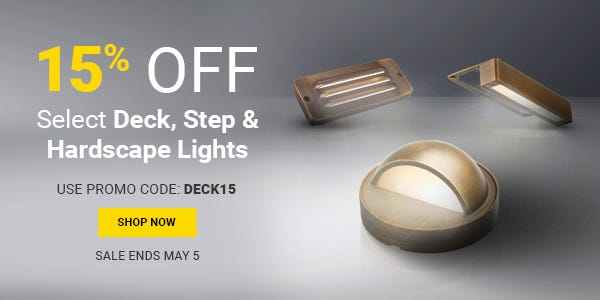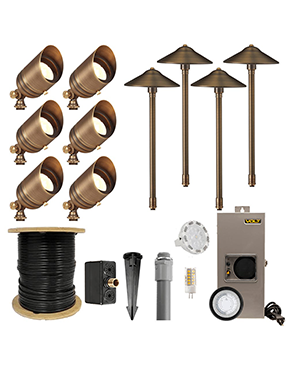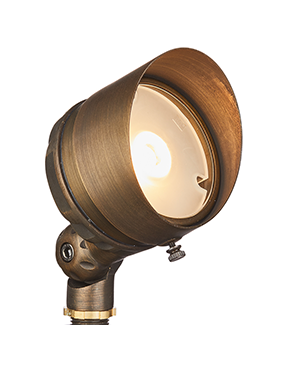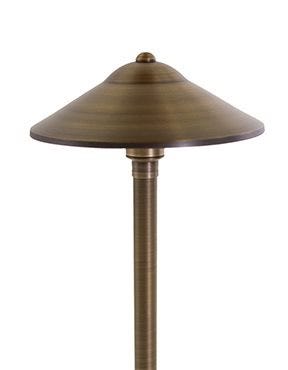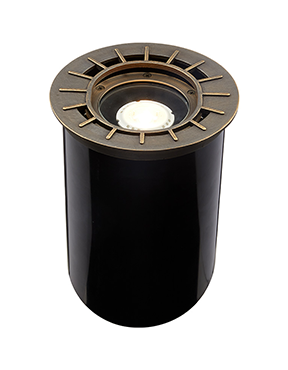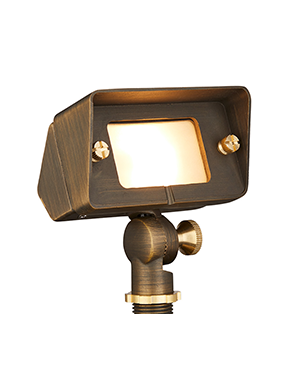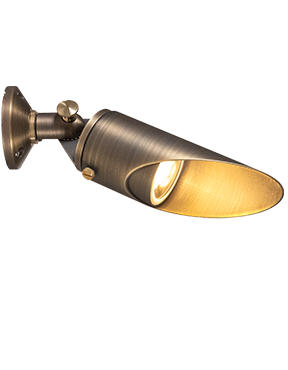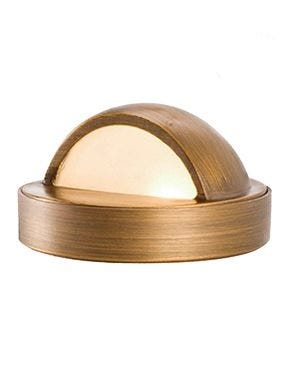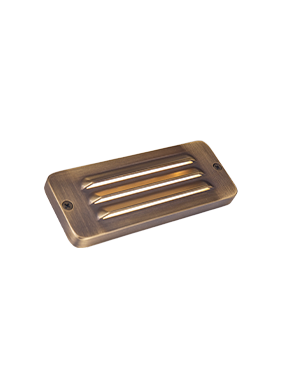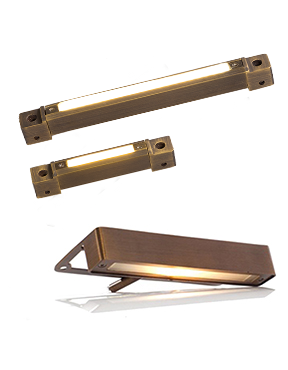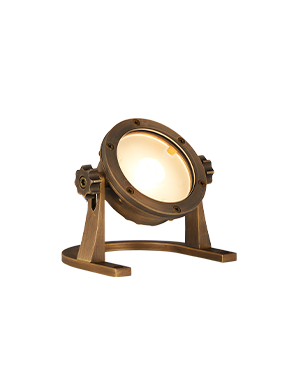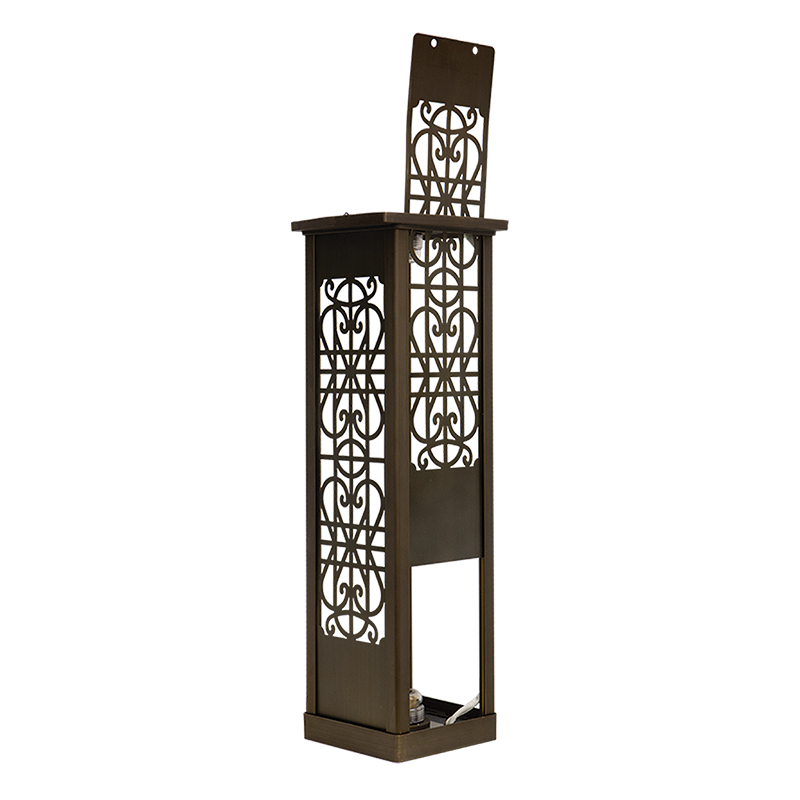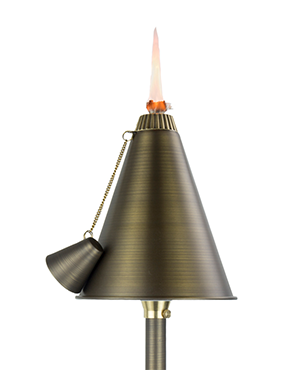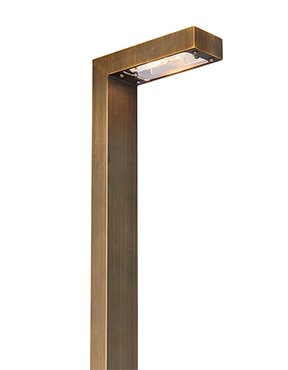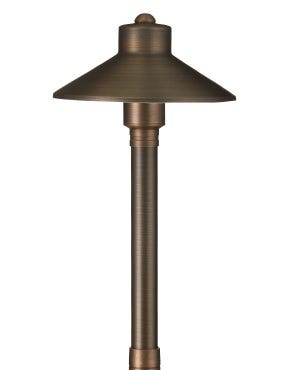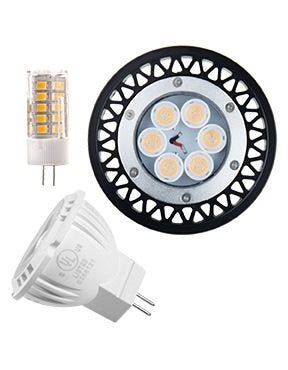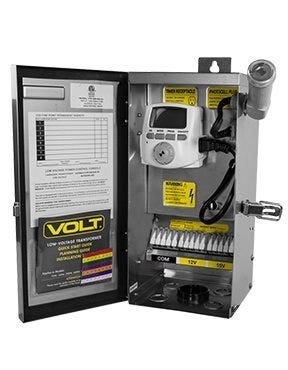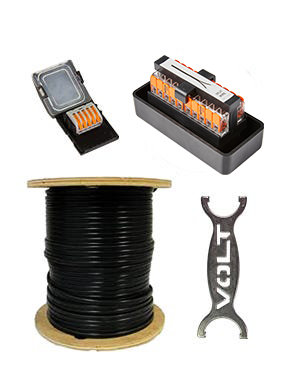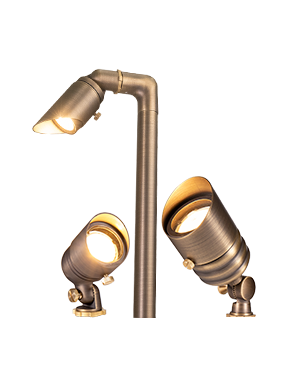12V Landscape Lighting
Landscape Lighting Videos
About Landscape Lighting
12V is the most common option for residential outdoor lighting. Known as "low voltage," it is achieved by converting standard 120V current into 12V through use of a transformer. The main benefits of low voltage are:
- Very little risk of electrical shock, even underwater
- 12V lighting can be installed by anyone, while 120V ("line voltage") requires a licensed electrician
- Wide selection of energy-efficient 12V fixtures to choose from
- Low voltage wire can be directly buried in a shallow trench (minimum depth: 6"), generally without using conduit
Whether you are a do-it-yourselfer or a lighting professional, low voltage is typically preferred for residential use. For commercial, security and municipal applications, and sometimes for use around large estates, shop for 120V outdoor lighting.
The first major component of an outdoor lighting system is the fixture. It not only houses the light source but helps to direct the light toward the area you wish to illuminate. The next major component of a 12-volt lighting system is the low voltage transformer. This is the 120 volt power supply that converts line voltage current down to 12 volt AC. Other components of your system include wire and wiring connectors. These are what carry the power out from the transformer to the fixtures in the yard. Each of these and all other components needed for installation - such as LED bulbs, ground stakes and conduit - are included in our landscape lighting kits. These are the easiest, most cost-effective way to add a professional-grade lighting system to your home. Everything you'll need comes in one box, and you'll save money with bundled pricing.
- Spotlights are the most common type of landscape light. These highlight specific key features throughout your landscape.
- Any spotlight with a 60 degree beam angle or wider is known as a flood light. These use large pools of light to illuminate broad areas with a single fixture.
- Path lights are used as guiding lights to illuminate walkways and pathways. They can also be used in large flower beds to illuminate areas with lots of ground vegetation.
- Hardscape lights are used when you need a low-profile fixture to highlight specific architectural features.
- In-ground lights are used in up-lighting situations that require the light source to remain hidden.
- Underwater lights are specifically designed to be fully or partially submerged year-round. They are typically used in fountains or ponds.
- Downlights are spotlights or flood lights that are designed specifically to be oriented in a downward position.
- Specialty lights are designed for specific tasks that may be hard to illuminate with other standard fixtures; these lights include bistro lights, tiki torches and decorative area lights.
Integrated fixtures have an LED board built into them, so there's no bulb to install. The downside to integrated fixtures is that if one should fail, then the entire fixture has to be replaced. Lamp-ready fixtures take a bulb, which allows for much more customization in terms of brightness (lumens), color temperature and beam spread. And if a lamp-ready fixture goes out, you typically just need to replace the bulb.
VOLT® products are designed to withstand weather and water for a lifetime of outdoor use. Our professional grade solid brass and copper fixtures, low voltage transformers, LED bulbs and accessories are built to the highest standards of construction and performance, using state-of-the-art components. They are field tested for durability and ease of installation, and meet rigorous standards of electrical safety and electromagnetic emissions tests. And we back them with our no-hassle lifetime warranty.
Outdoor lighting is very cost-effective to own - especially when using the latest LED technologies, as VOLT® products do. LED lights require far less energy to produce the same brightness as halogen bulbs; LEDs use at least 75% less energy and last 25 times longer than incandescent lighting. And when purchasing your system, you'll find VOLT® prices are especially low because we're factory-direct. We also offer a military discount for active duty military, active or inactive reservists, National Guard, veterans, retirees, their spouses and dependents.
Low voltage lighting is safe and easy enough for most homeowners to install themselves as a do-it-yourself project. And with the how-to videos and articles in our Learning Center, as well as live support available by phone 7 days a week, we're here to help make installation a breeze. The key is to start your project by creating an outdoor lighting installation plan, which is tremendously helpful in avoiding mistakes. It's easy, though - simply make a rough sketch of your property, set your transformer location, set your fixture locations and determine your wire runs.
Landscaping lights can be used to enhance the beauty, safety and security of your yard, garden, patio, deck, dock, flower beds, pathway, driveway, outdoor kitchen, pool and pond areas, tree canopies, flag poles, retaining walls and more! By installing low voltage lighting, you can continue to enjoy your outdoor living spaces when the sun goes down.
This depends upon your application, personal preference, terrain and the beam spread of the fixtures. For example, if you're installing path lights with a 12-foot diameter beam spread, and you want continuous lighting along a walkway, you might space the fixtures 12 feet apart. But for independent pools of light, you might space the fixtures 16 feet apart. Before installing your fixtures, it's helpful to walk the area, mark where you want to put fixtures with small flags or pencils, then measure the distance between fixtures as well as the distance from the fixtures to your transformer.
When it comes to LED lighting, a better question is, "How many lumens are needed for outdoor lighting?" The difference between lumens vs. watts is important to understand. Watts measure energy consumption - and for old halogen bulbs, that would give you a rough idea of light output. But modern LEDs are incredibly efficient, requiring far fewer watts to produce the same light output as halogens. So, the metric that you'll want to focus on is lumens, which measure visible light energy. How much light output you'll need depends on your application. For example, you might want lower light output from a downlight, where you're trying to achieve a natural moonlighting effect, than you would want from security lighting. But bear in mind not all lumens produced by a lamp will exit the fixture - so when comparing fixtures, you'll want to know the "fixture output" or "fixture lumens."
With in-house engineers and lighting experts who use the latest LED and control technologies, VOLT® designs, manufactures and sells the best products in the outdoor lighting industry; that's why we have an average customer rating of 4.9 stars on more than 13,000 reviews. Our fixtures feature premium internal components and are constructed of solid brass or copper. There's no paint or powder coating to wear off, peel or corrode - just solid brass or copper that will patina beautifully as it ages. Competitors' aluminum fixtures may be cheaper up front, but they'll inevitably rust and need to be replaced in a few years. VOLT® products are professional quality and built for a lifetime of beauty and durability.
Our lighting experts are on hand from 8 a.m. - 8 p.m. ET Monday-Friday and 10 a.m. - 6 p.m. ET Saturday-Sunday; call us at (813) 978-3700


